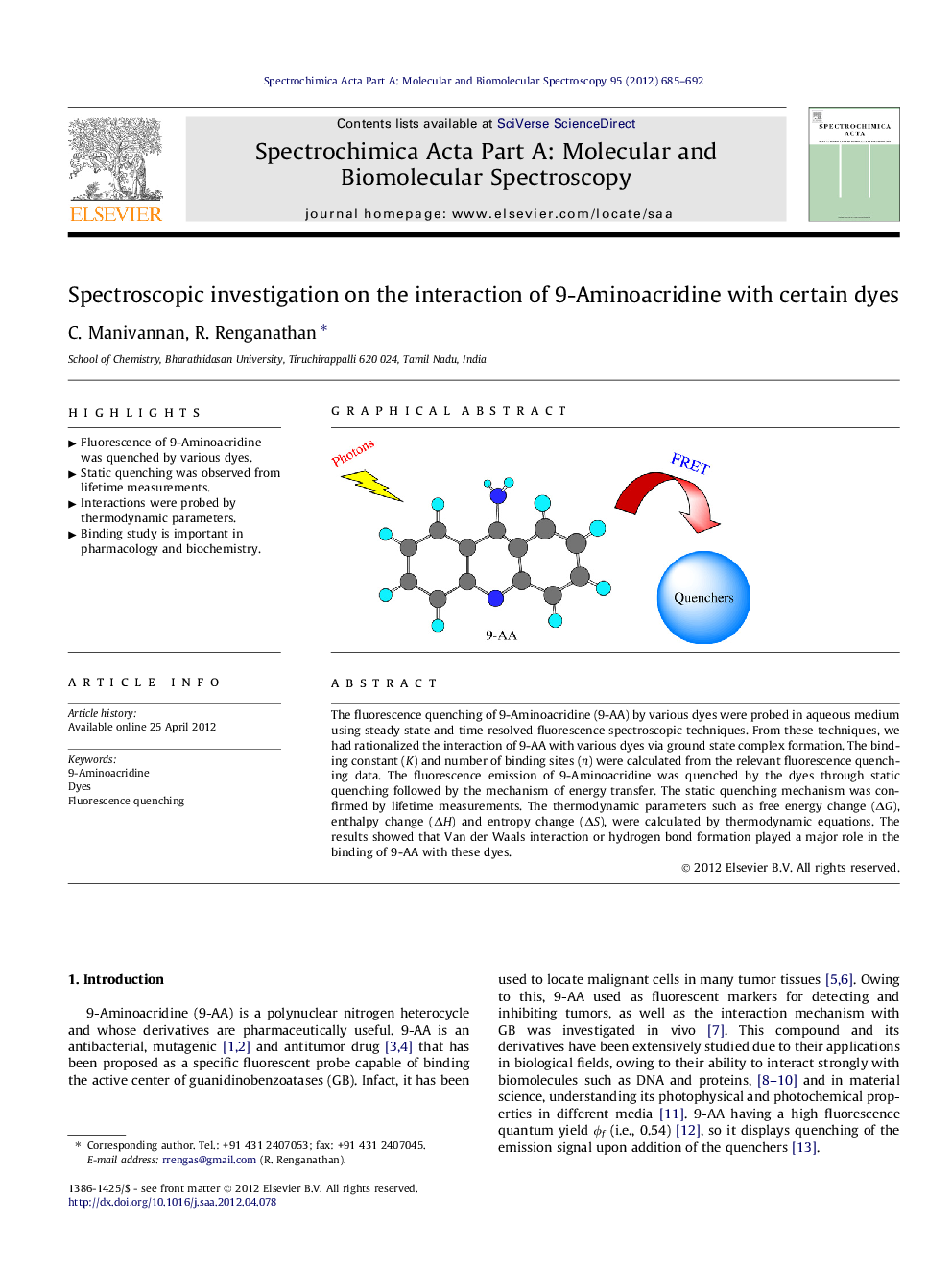| Article ID | Journal | Published Year | Pages | File Type |
|---|---|---|---|---|
| 1231180 | Spectrochimica Acta Part A: Molecular and Biomolecular Spectroscopy | 2012 | 8 Pages |
The fluorescence quenching of 9-Aminoacridine (9-AA) by various dyes were probed in aqueous medium using steady state and time resolved fluorescence spectroscopic techniques. From these techniques, we had rationalized the interaction of 9-AA with various dyes via ground state complex formation. The binding constant (K) and number of binding sites (n) were calculated from the relevant fluorescence quenching data. The fluorescence emission of 9-Aminoacridine was quenched by the dyes through static quenching followed by the mechanism of energy transfer. The static quenching mechanism was confirmed by lifetime measurements. The thermodynamic parameters such as free energy change (ΔG), enthalpy change (ΔH) and entropy change (ΔS), were calculated by thermodynamic equations. The results showed that Van der Waals interaction or hydrogen bond formation played a major role in the binding of 9-AA with these dyes.
Graphical abstractFigure optionsDownload full-size imageDownload as PowerPoint slideHighlights► Fluorescence of 9-Aminoacridine was quenched by various dyes. ► Static quenching was observed from lifetime measurements. ► Interactions were probed by thermodynamic parameters. ► Binding study is important in pharmacology and biochemistry.
